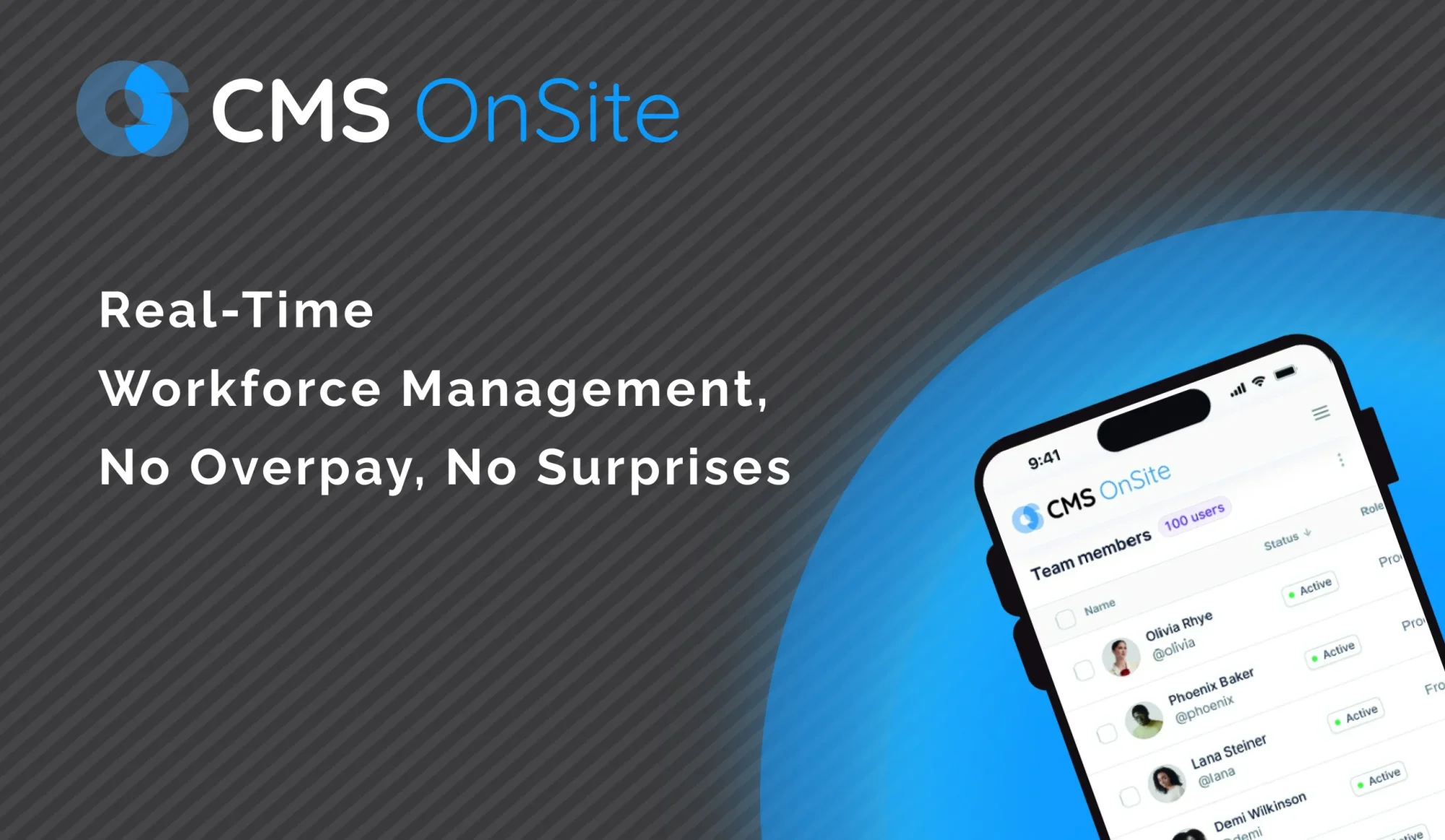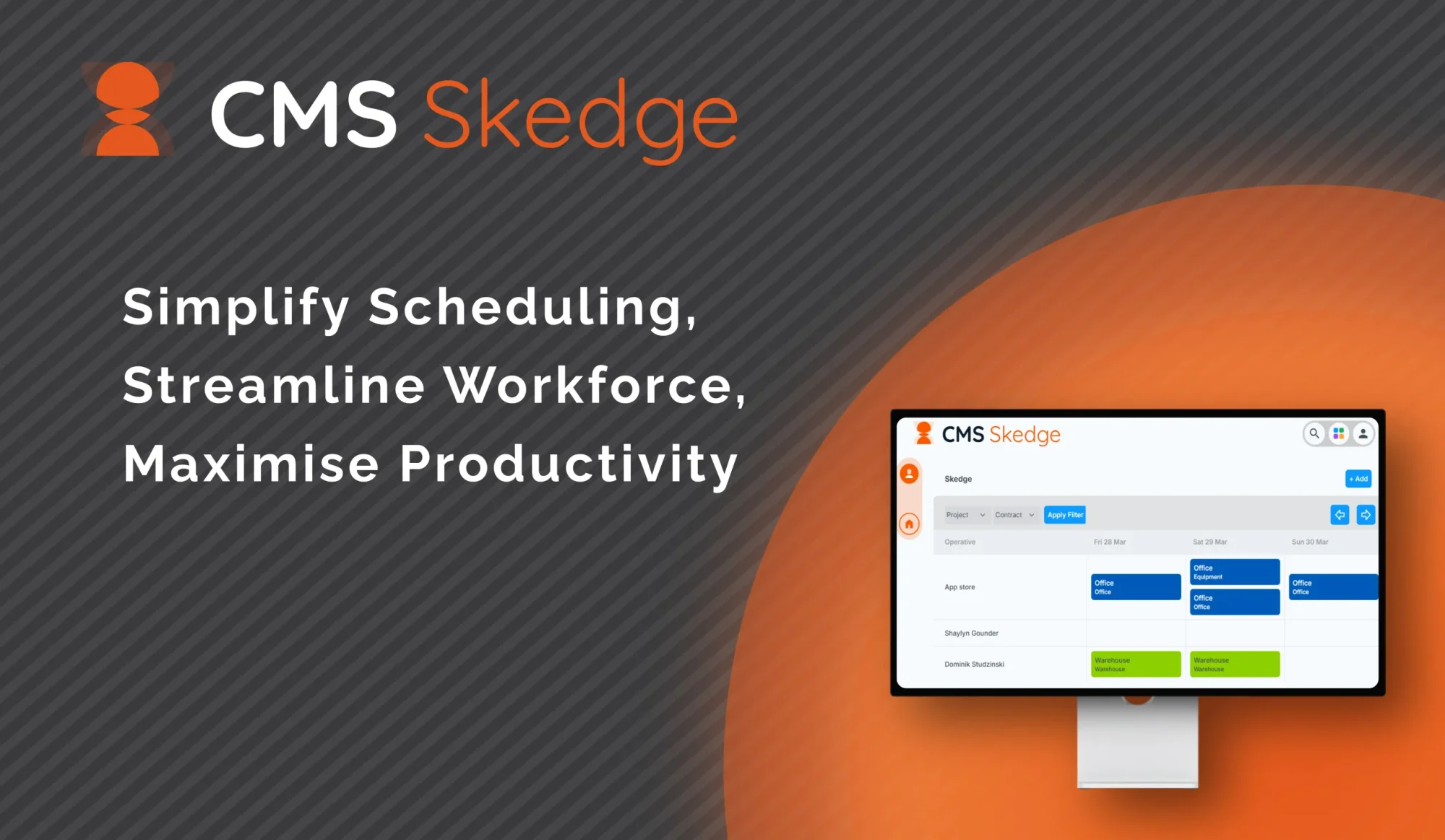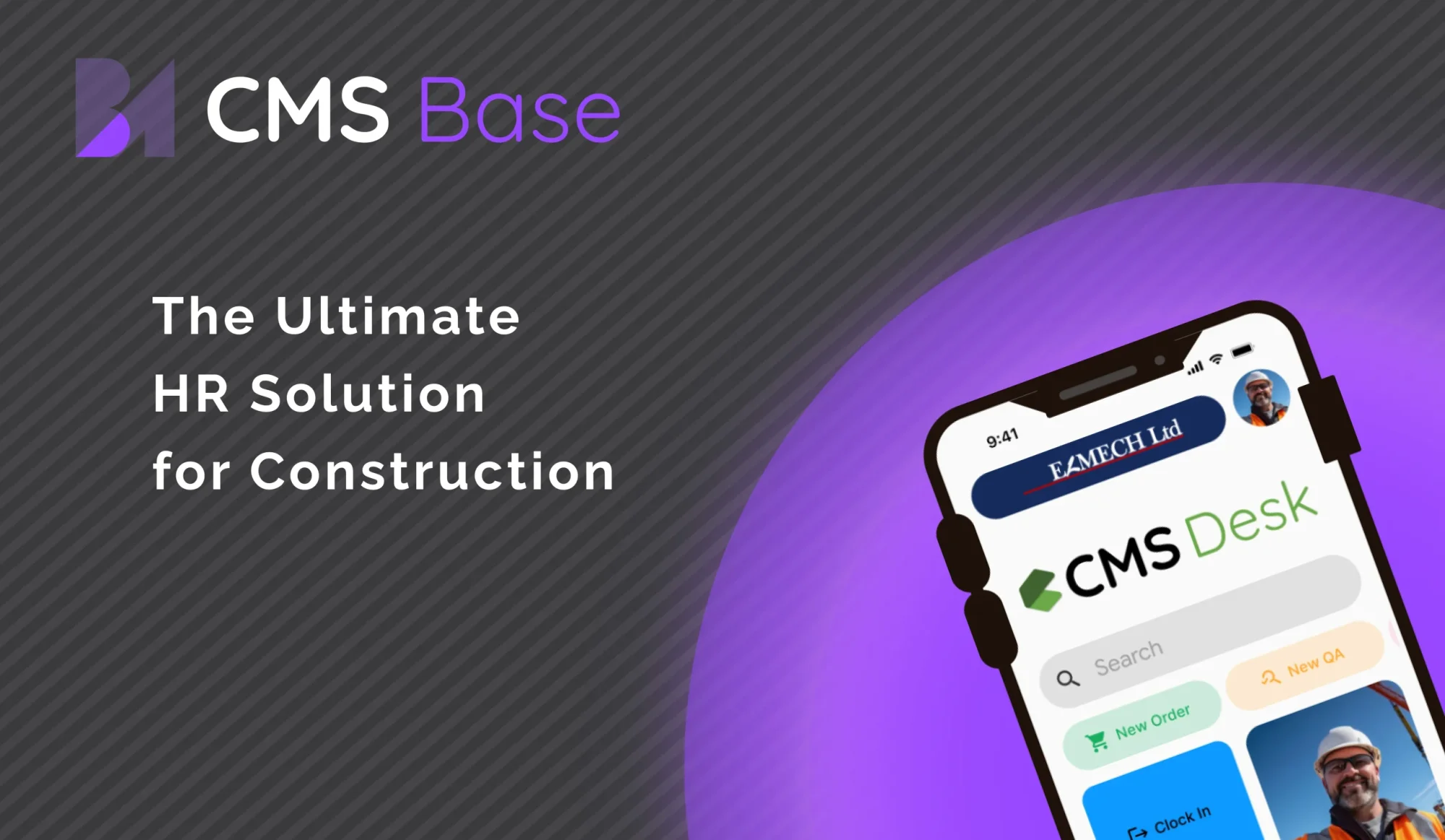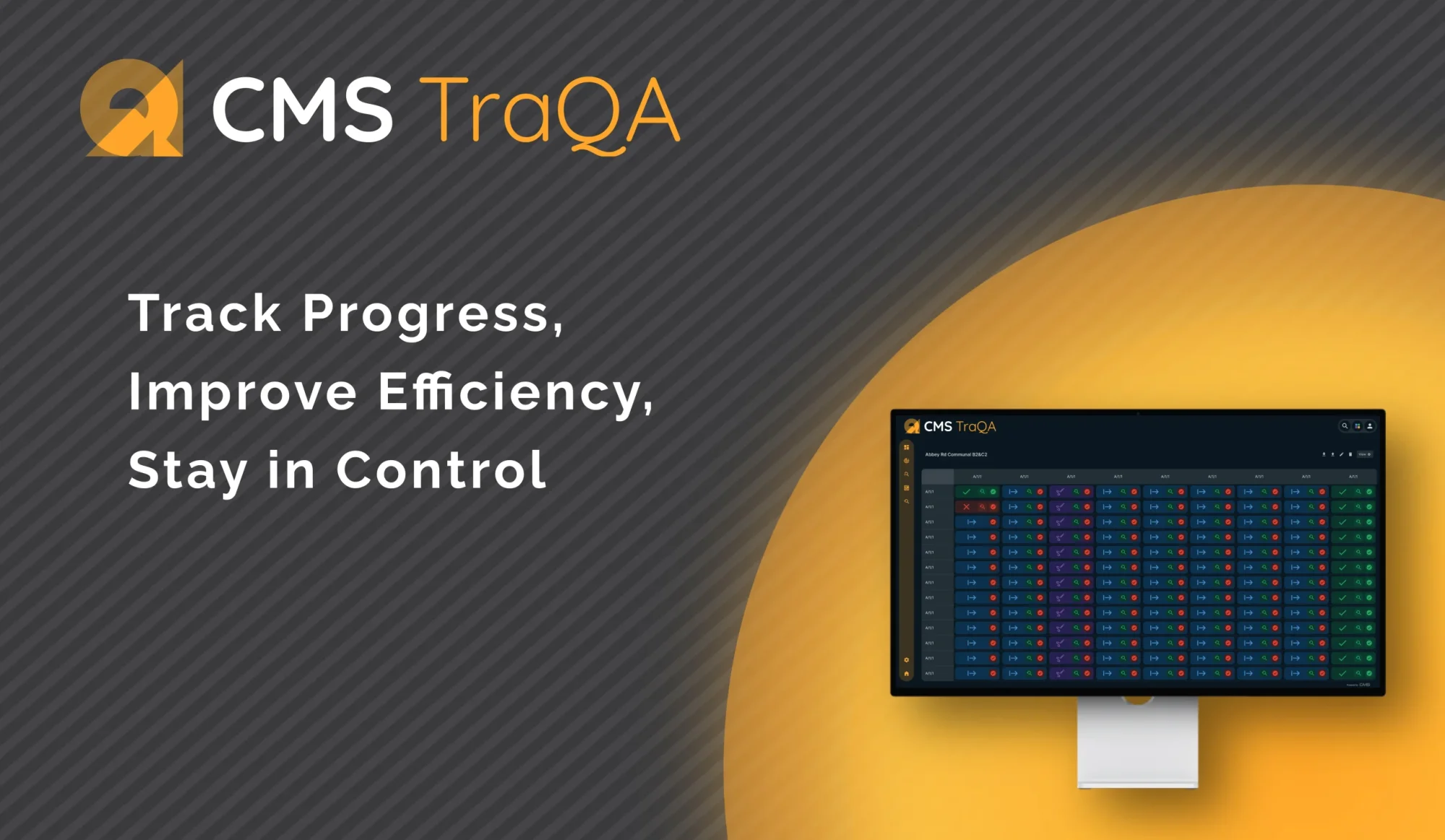
A Construction Management Plan (CMP) is a detailed strategic document that outlines how a construction project will be managed and executed from start to finish. It serves as a roadmap for project delivery, covering essential components such as site logistics, safety measures, communication protocols, environmental management, traffic control, and compliance procedures. CMPs are tailored to the specific project and location, ensuring that every stage of construction aligns with regulatory requirements, project goals, and stakeholder expectations.
In urban and densely populated areas, a CMP is often mandated by local planning authorities to minimise disruptions and ensure public safety. It helps streamline operations, enhance communication among stakeholders, and mitigate environmental and social impacts. Tools like CMS Desk support this process by digitising plan execution; enabling real-time updates, team coordination, and compliance tracking across sites. Ultimately, a well-prepared CMP is crucial for delivering construction projects efficiently, safely, and responsibly. Ultimately, a well-prepared CMP is crucial for delivering construction projects efficiently, safely, and responsibly.
Why is it Important to create a Construction Management Plan?
Creating a Construction Management Plan is not just a regulatory formality; it’s an essential step toward ensuring a project’s long-term success. A CMP provides the groundwork for informed decision-making, risk management, and operational control. It brings clarity to every stage of the construction lifecycle, from pre-construction approvals to site handover, and helps project leaders make data-driven choices. A Construction Management Plan is a vital document in construction project management, ensuring coordination and compliance from the pre-construction phase through to project completion.
Without a comprehensive CMP, construction teams risk operating without clear direction, which can lead to miscommunication, regulatory violations, or inefficiencies. The CMP helps mitigate such risks by aligning team efforts with legal requirements, community expectations, and sustainability goals. It also supports transparent stakeholder engagement, helping developers build trust with local communities and authorities. In short, a CMP helps prevent costly setbacks by ensuring everyone involved knows what to expect, how to act, and what to avoid.
Reasons Why CMPs Are Important:
Clarifies Project Vision, Scope & Deliverables
By outlining objectives, timelines, and responsibilities upfront, the CMP ensures that all stakeholders—from contractors to clients—are aligned from day one, reducing misunderstandings and scope creep.
Supports Legal and Regulatory Compliance
Most planning authorities require a CMP for permit approval. It demonstrates a clear commitment to health, safety, and environmental standards, reducing the risk of legal or regulatory violations.
Enhances Team Collaboration and Stakeholder Communication
Defined roles, responsibilities, and communication protocols make it easier for internal teams and external partners to work in sync. CMPs also promote community engagement by anticipating public concerns, outlining complaint handling procedures, and maintaining goodwill throughout the project. Developing a strong CMP is typically part of the project manager’s role in construction, as they’re responsible for planning logistics, communication protocols, and safety strategies.
Minimises Public Disruption with a Construction Management Plan
Through traffic planning, noise control, and environmental safeguards, CMPs help reduce the negative impact on surrounding areas—especially important in dense urban environments.
Improves Site Logistics and Resource Planning
The CMP often outlines how materials will be sourced and delivered, aligning with the procurement process in construction to avoid costly delays and supply issues. It incorporates detailed access routes, pedestrian safety, and vehicle holding areas to keep workflows smooth and efficient. For resource planning and team scheduling outlined in the CMP, many companies rely on the benefits of workforce management software for construction to ensure shifts, certifications, and site activity are tracked efficiently.
Upholds Safety and Risk Management Standards
CMPs detail safety protocols, PPE requirements, and emergency procedures, helping prevent incidents and ensuring the wellbeing of workers and the public.
Promotes Environmental Responsibility
By addressing dust control, emissions, waste management, and runoff, the CMP demonstrates a commitment to sustainable construction practices.
Establishes a Framework for Accountability
With clear processes in place for tracking compliance, handling disputes, and updating stakeholders, the CMP fosters transparency and trust throughout the project lifecycle. Modern construction management software solutions can help digitise and centralise your CMP, making it easier to monitor real-time updates, track compliance, and maintain communication.
In essence, a CMP transforms a construction site from a reactive environment into a proactive operation. It helps projects run on time, stay within budget, and align with legal, environmental, and community standards—while creating a safer and more coordinated worksite for everyone involved.
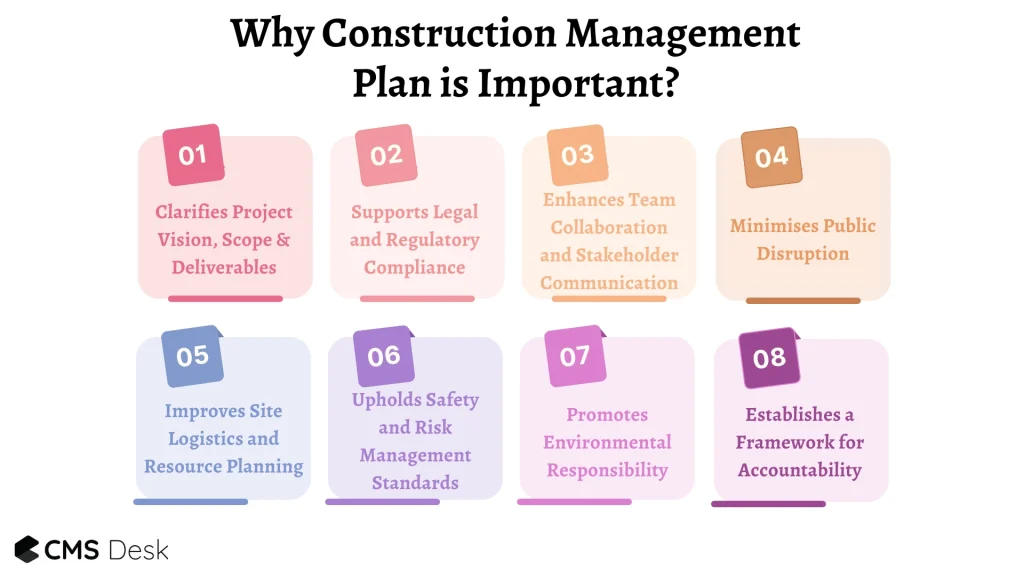
Who Prepares and Uses a CMP?
Creating and implementing a CMP is a collaborative effort that brings together various roles within a project team. While the principal contractor or project manager typically leads its development, the CMP’s value lies in its usage across different teams and stakeholder groups. Each party brings its expertise to the planning process, ensuring the document is both comprehensive and grounded in practical realities.
Once in place, the CMP becomes a living document used by site staff, regulators, and stakeholders to monitor compliance and performance. It’s updated regularly to reflect evolving site conditions or regulatory changes. The success of a CMP ultimately depends on how well it’s adopted and maintained by everyone involved in the construction process.
Involved Parties:
- Project Manager or Principal Contractor
Oversees the creation of the CMP, ensuring it aligns with planning conditions and project requirements.
- Site Managers and Supervisors
Use the CMP as a daily operational guide and ensure site workers follow its outlined procedures.
- Health and Safety Advisors
Contribute to safety-related sections and ensure risk assessments are thorough and up-to-date.
- Environmental Consultants
Advise on reducing the environmental impact and ensure sustainability practices are integrated.
- Local Planning Authorities
Review and approve the CMP before work begins and may require updates if site conditions change.
- Community Stakeholders
Refer to the CMP for updates, timelines, and plans to mitigate disruption.
CMPs are also used by auditors and regulators during inspections or in the event of a complaint or incident.
Benefits of a Construction Management Plan
A Construction Management Plan (CMP) brings a wealth of benefits to construction projects of all scales. When implemented effectively, it supports better planning, smoother execution, and more successful outcomes.
Beyond day-to-day operations, a CMP can serve as a powerful communication tool that improves transparency with the public, clients, and regulatory bodies. It not only protects the environment and public welfare but also adds value to the business by improving productivity, reducing errors, and strengthening a company’s reputation for responsible construction practices.
Key Benefits:
Operational Efficiency
A CMP aligns schedules, logistics, and resources, helping the construction team avoid duplication of effort and wasted time.
Risk Reduction
By identifying potential safety, environmental, and operational risks in advance, a CMP helps proactively avoid project disruptions.
Improved Stakeholder Relationships
Transparent communication with neighbours, authorities, and clients builds trust and cooperation throughout the project.
Environmental Protection
Mitigating the construction site’s environmental impact enhances sustainability and demonstrates corporate responsibility.
Regulatory Preparedness
Ensures the project complies with all local regulations and provides documentation needed for inspections and approvals.
Dispute Resolution and Legal Protection
A documented plan provides a factual reference in case of disputes, delays, or claims.
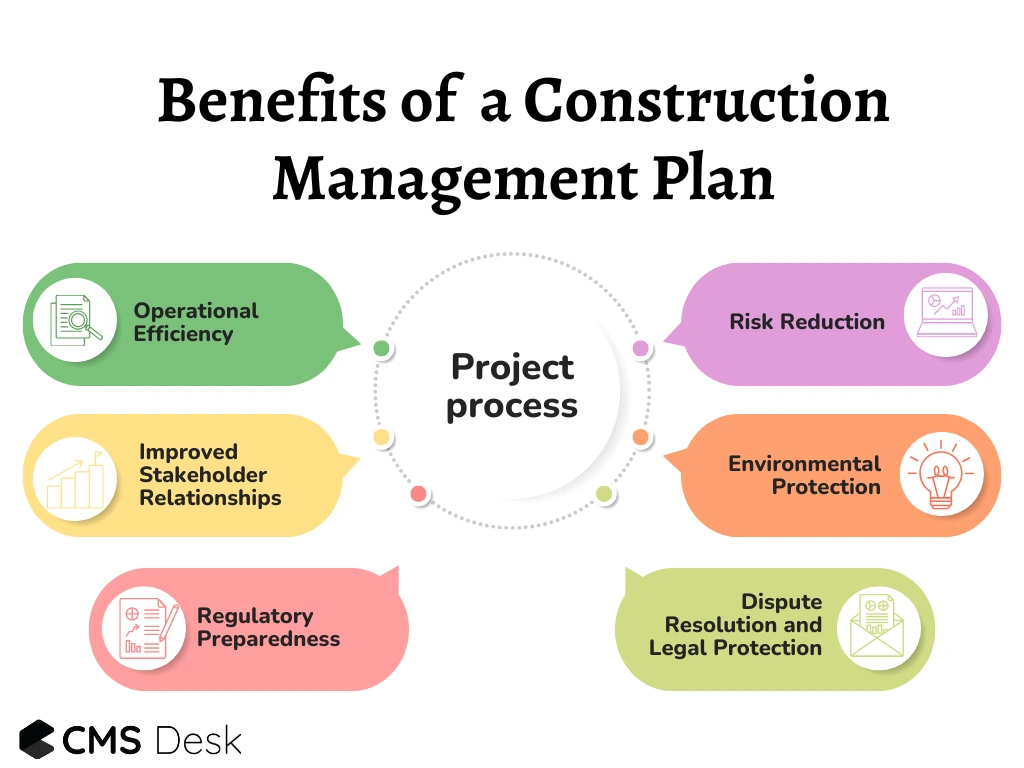
Challenges Affecting CMP
While Construction Management Plans are designed to improve clarity and efficiency, they also come with challenges that can compromise their effectiveness. These challenges often stem from poor planning, lack of engagement, or failure to adapt to real-time conditions. If not addressed, they can result in non-compliance, delays, cost overruns, or reputational damage.
Understanding these common obstacles is critical for teams aiming to create meaningful and actionable CMPs. Awareness of such pitfalls enables better planning and encourages proactive solutions that maintain momentum and uphold project integrity.
Common Challenges:
Incomplete or Generic CMPs
A plan that lacks project-specific details may not adequately address the unique risks or logistics of the site.
Resistance to Implementation
Teams may neglect the CMP if it is seen as overly complex or disconnected from on-site realities.
Poor Training and Awareness
If workers and subcontractors are not properly briefed on the CMP, compliance can suffer.
Lack of Real-Time Updates
Without tools to track changes or incidents, the CMP can quickly become outdated and irrelevant.
Insufficient Communication
A lack of clear communication protocols can result in misunderstandings, delays, or neighbour complaints.
Technology Gaps
Construction sites without digital tools struggle to keep the CMP current and accessible across teams.
How to Create a Construction Management Plan?
Developing an effective Construction Management Plan requires a strategic, structured, and consultative approach. It’s not a one-size-fits-all document—it must be tailored to suit the specific needs, risks, and regulations of each construction site. A well-prepared CMP reflects careful consideration of logistics, stakeholder dynamics, and local authority requirements.
By following a clear step-by-step process, teams can ensure that their CMP is not only compliant but also practical and effective. The development phase should be inclusive and collaborative, with input from professionals across various disciplines to ensure a balanced, realistic, and enforceable plan.
Steps to Develop a CMP:
- Conduct Initial Project Assessment: Understand the project size, complexity, location constraints, and community sensitivities.
- Engage Stakeholders Early: Collaborate with local authorities, safety officers, engineers, and environmental experts during the planning stage.
- Document Regulatory Requirements: Identify legal and planning obligations that the CMP must address before construction starts.
- Develop Key Sections: Include detailed plans for traffic, safety, site layout, environmental controls, logistics, and communication.
- Assign Roles and Responsibilities: Clearly outline who is accountable for each aspect of implementation and compliance.
- Establish Monitoring Protocols: Define how and when the CMP will be reviewed, updated, and audited during the project.
- Train the Workforce: Conduct inductions and refreshers to ensure every worker understands and follows the CMP.
- Submit for Approval: Ensure the plan is reviewed by planning authorities and updated based on feedback before site mobilisation.
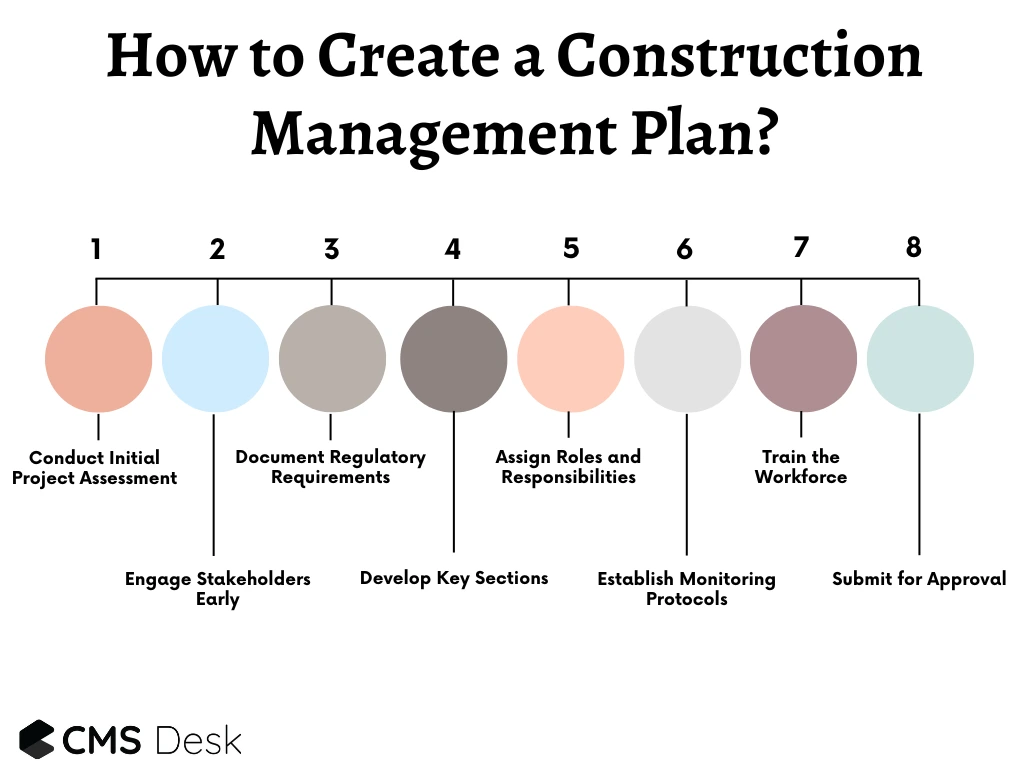
How Technology is Changing CMP
As the construction industry embraces digital transformation, Construction Management Plans are evolving from static paper documents into dynamic, technology-driven systems. The integration of digital tools not only enhances the accuracy of CMPs but also allows teams to adapt quickly to real-time site conditions. This transformation is making construction planning more responsive, collaborative, and data-informed.
New technologies such as cloud platforms, mobile apps, and real-time dashboards are helping teams collaborate more effectively, track performance, and respond to changes immediately. Whether it’s monitoring site conditions through IoT sensors or integrating Building Information Modelling (BIM) for planning alignment, technology is reshaping the way CMPs are created, accessed, and enforced on-site.
Technological Advancements Impacting CMPs:
- Cloud-Based CMP Software
Provides real-time collaboration, document control, and version tracking for multiple stakeholders.
- Mobile Applications
Enable on-site staff to access the CMP, report incidents, and log updates directly from their devices.
- Digital Dashboards and Reporting Tools
Allow for visual tracking of project KPIs, safety metrics, and logistical updates.
- AI-Powered Risk Analysis
Predicts high-risk activities, resource shortages, and delays before they occur.
- BIM Integration
Combines construction planning with digital design models for better alignment between the plan and physical works.
- IoT and Smart Sensors
Offer live data on noise levels, air quality, traffic, and more, feeding insights directly into the CMP.
With digital innovation, CMPs are evolving from static documents into dynamic tools that support smarter, safer construction.
Conclusion
In today’s complex and fast-moving construction landscape, a Construction Management Plan is more than just a regulatory checkbox; it’s a vital blueprint that governs the smooth, safe, and sustainable execution of projects. From defining responsibilities to managing environmental impacts and enabling proactive risk control, a CMP ensures that every aspect of a construction project is managed with precision and foresight.
As client expectations, regulations, and technologies evolve, so too must our approach to planning and execution. Tools like CMS Desk are helping project managers simplify and digitise CMP workflows, enabling better coordination, compliance tracking, and real-time updates across teams. With the right plan in place—and the right technology to support it—construction teams can deliver high-quality outcomes while safeguarding people, the environment, and community trust.
Frequently Asked Questions (FAQ)
1. Is a Construction Management Plan legally required?
Yes, in many jurisdictions, especially for large-scale or urban projects, submitting a Construction Management Plan is a mandatory part of the planning approval process. Local authorities often require a CMP to ensure the project won't disrupt surrounding communities or violate environmental and safety standards.
2. Who approves the Construction Management Plan?
CMPs are typically reviewed and approved by local planning authorities or regulatory bodies before construction begins. These authorities assess whether the plan meets requirements related to safety, traffic, logistics, and environmental impact.
3. How often should a CMP be updated?
A CMP should be treated as a live document and updated regularly, especially when there are changes in site conditions, regulations, logistics, or key personnel. Technology platforms like CMS Desk can help teams keep the CMP up to date with real-time revisions and shared access.
4. Can a small construction project benefit from a CMP?
Absolutely. Even small-scale projects benefit from structured planning and clear communication. A simplified CMP can help coordinate trades, reduce risks, and ensure compliance, even if it's not a formal requirement.
5. How long does it take to prepare a CMP?
The preparation time depends on the complexity and scale of the project. A basic plan might take a few days, while a detailed, multi-stakeholder CMP for a large site could take several weeks and require multiple rounds of review and consultation.
6. What’s the difference between a Construction Management Plan and a Site Management Plan?
While both documents deal with site operations, a CMP is broader in scope. It addresses not only on-site management but also external logistics, regulatory compliance, stakeholder engagement, and environmental impact. A Site Management Plan is often more focused on daily operational logistics within the site boundary.
7. What role does technology play in CMP execution?
Modern CMPs are increasingly supported by digital tools like CMS Desk, which enable live tracking, mobile access, and collaborative editing. These platforms reduce paperwork, improve compliance tracking, and allow instant updates across project teams and stakeholders.
8. Who is responsible for enforcing the CMP on-site?
The principal contractor or site manager is generally responsible for ensuring that the CMP is implemented and adhered to. They must also train subcontractors and site staff, conduct inspections, and liaise with authorities to report compliance.
Any questions? Get in Touch
